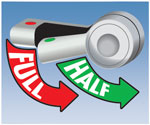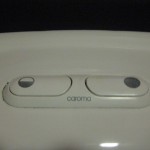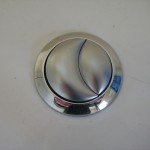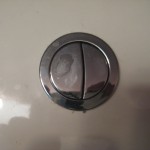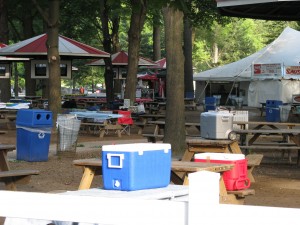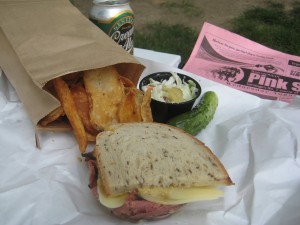Yesterday I drove from San Francisco to Hollister for the last Tomato U-Pick of the season at Mariquita Farm. It’s run by a couple who decided they’d rather sell direct from the fields than pay rent at the Ferry Plaza Farmers Market.

If there is anything better than standing in the autumn sun and plucking a warm ripe tomato off the vine and popping it in your mouth, I would like to know about it. I had planned to pick 10 pounds of San Marzanos for sauce and 5 pounds of Early Girls mixed with a few heirlooms. But my emotions got the best of me and I ended up with 25 pounds of Marzanos and 30 plus pounds of everything else.
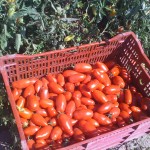
The tomatoes, other than the Marzanos, were so ripe that many of them got squished and overripe on the long drive back (punctuated with a stop for Bun Pho Hue in San Jose) and they ended up in the sauce. I made a classic red sauce, which I wanted for comparison to the “red sauce places” I’m encountering in my new home in Saratoga. I adapted a recipe from Marcella Hazan which goes like this:
Classic Red Tomato Sauce for pasta or pizza
10 pounds San Marzano tomatoes
1 ½ cup each finely chopped onion, celery and carrot
Extra Virgin Olive Oil (mild, not overly “grassy” in taste)
Salt and sugar
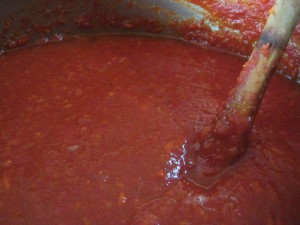
Dump the tomatoes into a sink or very large bowl full of water. Take them out slicing each in half lengthwise and cutting out any bad spots and transfer to a large pot. Bring to a simmer, covered; the water from washing will be enough liquid so they don’t stick. Once the mixture is bubbling away remove the lid and continue simmering about 90 minutes more until the tomatoes have lost their individual identity. Allow to cool to a safe handling temperature, then put them through a food strainer. I did this twice: at a coarse setting to remove the skins, then a finer setting to remove the seeds.
Meanwhile, sauté the onion in about ¼ cup olive oil until translucent. Remove then sauté carrots 5 minutes, then add celery and sauté 3 minutes more. Puree the carrots, onions and celery in a food processer and add to strained tomatoes. Cook 30 minutes then taste for seasoning. I only added 1 T of salt and 1 T of sugar and thought about using even less than this; the tomatoes themselves were that good and complete.
The result was fabulous, rich and tomato-y. Out of curiosity, I’d initially cooked the other squished tomatoes separately. Heirlooms are pretty, Early Girls are sweet, but San Marzanos have the robust flavor profile this sauce demands.
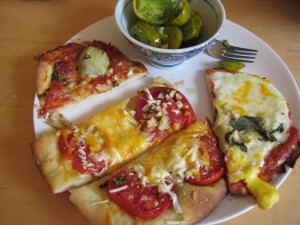
Dinner was an assortment of pizzas made with the red sauce and with individual tomato slices, accompanied by sliced green zebras (they were getting ripe faster than anything else) in a vinaigrette with garlic and basil. All in all, a pretty good day—assuming you like tomatoes, of course.

